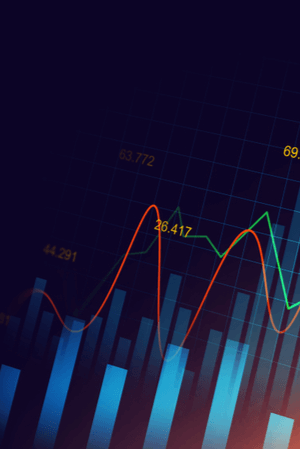Open and closed investment funds
There are different types of mutual funds . Two of the main types are open-ended and closed-ended mutual funds. It is important to understand the difference between the two in order to expand your investment portfolio.
For example, a participation in a closed investment fund cannot be traded on the stock exchange, while an open fund participation can be transferred via the stock exchange. Although open-end and closed-end investment funds both offer many investment opportunities, they are each suitable for different purposes. For example, one is better for long-term investors and the other is better for short-term investors. Which one is most suitable for you can be found here!
Open-end investment funds
An open-end mutual fund is what most people think of when they think of a mutual fund. An open-end mutual fund is a fund that can issue unlimited shares to investors. In short, if demand for the shares increases, the mutual fund and the company that manages it will constantly issue new shares. Open-end mutual funds can also buy shares of the fund when investors want to sell. In this way, the mutual fund itself is the market maker; it provides buyers and sellers when they are needed. This makes the fund flexible. The value of an open-end mutual fund is based on the net asset value (NAV), or the total market value of the underlying assets. Long-term investors, who think in terms of multiple years, benefit more from these open-end mutual funds. They are good for buy-and-hold investors.
Closed-end investment funds
A closed-end mutual fund is a better investment for the investor who has a lot of money to invest and who thinks in short-term terms. Investors have to pay commissions on every purchase, so a closed-end mutual fund can be a costly investment. Ultimately, it is important for experienced and new investors to weigh their financial situation, goals, and expectations against what each mutual fund can do.
A closed-end mutual fund trades on a stock exchange such as the London Stock Exchange. Unlike an open-end mutual fund, a closed-end mutual fund has a fixed number of shares available to the market. These are traded back and forth by intermediaries.

4 tips to find the right investment fund
Tip 1: Commission costs
A closed-end fund is less attractive to small investors because of the costs involved. A closed-end mutual fund is traded like stocks. This means that an investor has to pay a brokerage commission every time they buy or sell stocks. This makes it difficult for the novice investor to build a position in a mutual fund. Because you can trade in and out of a closed-end mutual fund quickly, it is more of a mutual fund for investors who jump in and out of a position in the short term, based on the price during the day. Open-end mutual funds are more designed for long-term investing and are probably a better option for people who have less money to put down. There are also fewer costs involved with an open-end mutual fund . However, there are investment management costs.
Tip 2: Discount
While open-end mutual funds price their shares based on net asset value, closed-end mutual funds do not price their shares based on net asset value (NAV). Open-end mutual fund shares are priced based on the demand for the finite number of shares in the market. This means that a closed-end mutual fund can trade at a lower share price than the underlying assets are actually worth. This discount, the lower price of the shares, can be a nice bonus for investors looking for an extra boost in capital growth.
Tip 3: Volatility
Of course, there are risks involved with both open-end and closed-end investment funds. For example, they are both vulnerable to a spontaneous change in the demand for shares in the fund. Closed-end investment funds in particular are vulnerable to this, because they are traded like normal shares. Closed-end investment funds have a fixed number of shares, which means that there is always the risk that there is more demand than supply, or vice versa, which can cause the price to fluctuate considerably. This fluctuation is also called volatility. This volatility of such a fund can vary more than the shares it owns. As a result, the price of a fund can therefore vary more in high peaks and low troughs than the price of the shares that fall into the fund.

Tip 4: When are the prices determined?
Closed-end mutual funds invest on the open stock market. This means that the prices of these funds are constantly changing based on supply and demand. Open-end mutual funds, on the other hand, determine their share price once a day, at the end of the day, when the value of the underlying shares is recalculated. In short, as an investor, you trade the shares of an open-end mutual fund based on the time that the Net Asset Value (NAV), or the value of the shares in the fund, were calculated. Namely at the end of the previous business day.
Investing in mutual funds
Although mutual funds began as a way for large institutional investors to pool their money for a common cause and spread the risk of losses, they also became popular among the general public in the 1980s and 1990s. Such a mutual fund can therefore be open or closed.
Are you interested in trading these funds? Then think about which broker is suitable by comparing them. Compare brokers with investment funds and find the broker that suits you best!